Duration: 6 Nights
Highlights: Immerse yourself in the vibrant culture, breathtaking landscapes, and unique traditions of Bhutan. Witness the colorful masks, mesmerizing dances, and spiritual ceremonies of the Thimphu Festival, an ancient celebration that brings together locals and travelers in a spectacle of Bhutanese heritage.

Simply Bhutan is an interactive living museum that gives an introduction to Bhutanese traditions. There’s also a café that dishes nosh that locals eat at home. [Opening hour Summer 09.00 AM - 17.00 PM, Winter 10.00 AM - 16.00 PM]
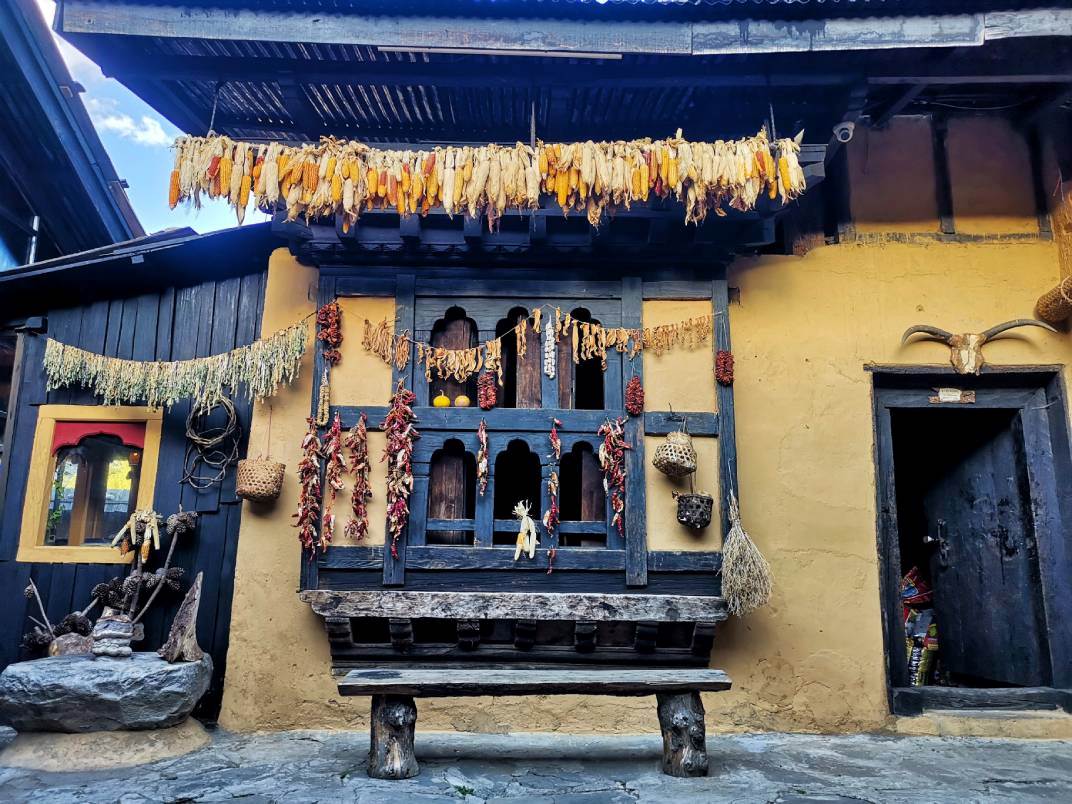
Towering above Thimphu Valley from the tranquil Kuenselphodrang Nature Park, the majestic Buddha Dordenma is a sight to behold. Standing at a staggering 51.5 metres, this golden statue is one of the largest seated Buddhas in the world—and it’s not just its size that impresses. Nestled inside are over 100,000 smaller Buddha statues, each crafted with the same devotion and detail. More than a monument, the Buddha Dordenma is a symbol of indestructibility and spiritual awakening, believed to bless the land with peace and harmony.

Immerse yourself in the spiritual rhythm of Thimphu with a visit to the National Memorial Chorten, where locals—especially the elderly—gather daily to walk in prayerful circles, spinning prayer wheels and murmuring mantras in a peaceful flow of devotion. Built in 1974 to honour the beloved Third King, this white-washed stupa is a living sanctuary. Step inside and you’ll find vibrant murals, intricate mandalas, and detailed sculptures that beautifully illustrate Buddhist teachings. If you're seeking serenity or a glimpse into Bhutanese spiritual life, this is a place that quietly leaves a lasting impression.
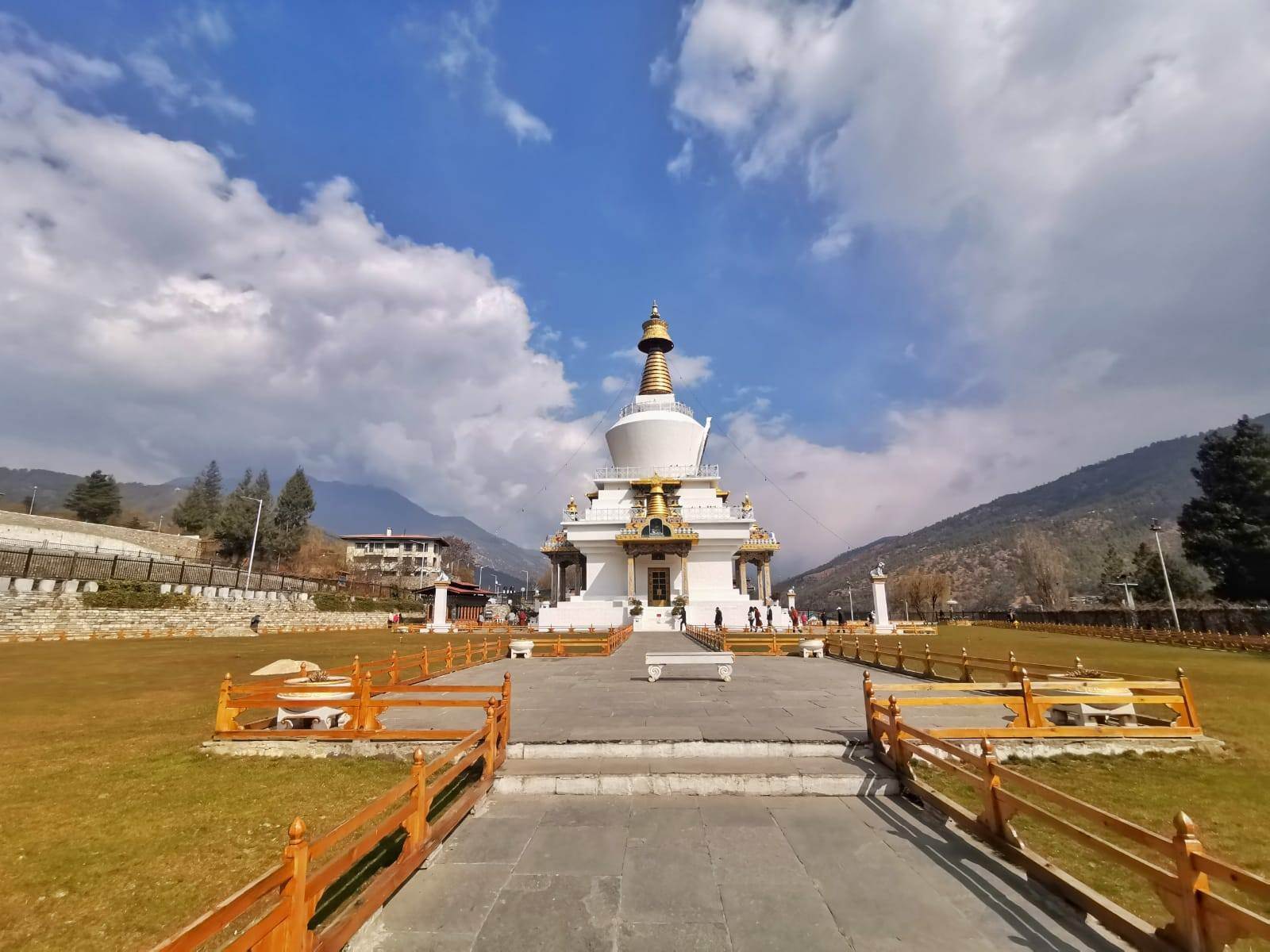
Just a short drive from Thimphu, Simtokha Dzong is Bhutan’s oldest surviving fortress, built in 1629 by Zhabdrung Ngawang Namgyal. Simtokha Dzong may be modest in size—but hidden among its sweeping courtyards lies a stunning secret: over 300 intricately carved slate panels lining the lower walls behind the prayer wheels. Each panel depicts a different Buddhist saint or philosopher, their serene faces and flowing robes capturing centuries of devotion and wisdom.
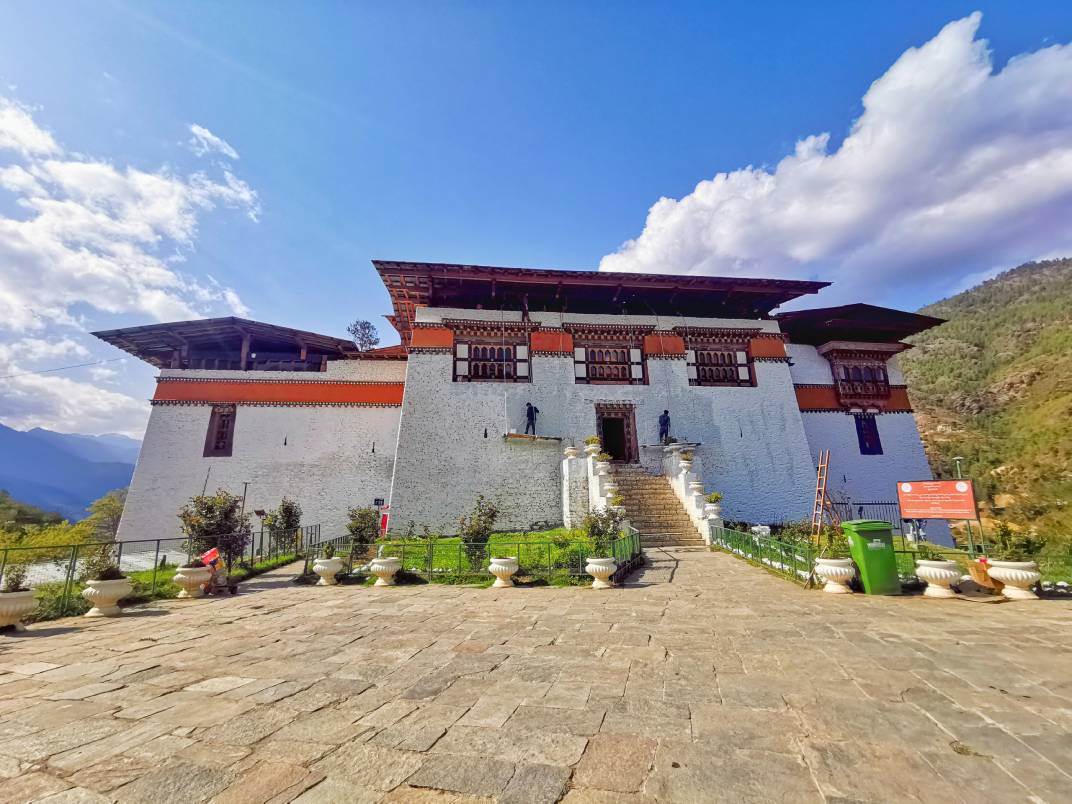
Strolling around Thimphu town offers a delightful blend of tradition and modern life in Bhutan’s capital. Start at Clock Tower Square, the lively heart of the city—adorned with carved wooden façades, prayer wheels, and water fountains—and a charming spot to linger while locals chat or browse the weekend market. From here, wander down Norzin Lam, Thimphu’s main street, where boutique shops, handicraft stores, and cafés invite you in. Along the way, admire traditional architecture—ornate wood carvings, colourful murals, and fluttering prayer flags—woven seamlessly into everyday life.
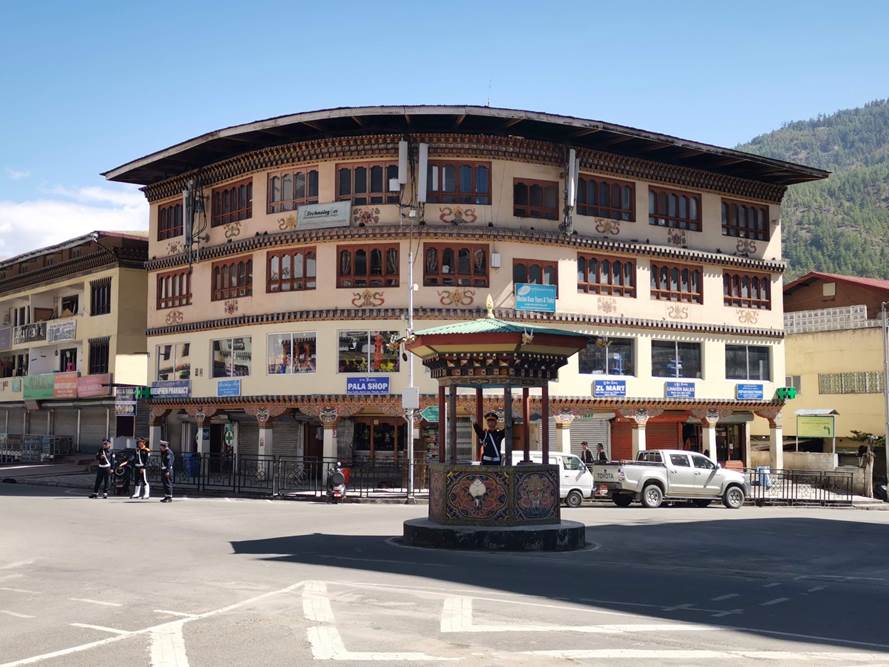
Tashichho Dzong, often called the “Fortress of the Glorious Religion,” is one of Thimphu’s most iconic landmarks—and a must-visit for anyone wanting to understand the soul of Bhutan. First built in 1641 and later restored by the visionary Third King, Jigme Dorji Wangchuck, this grand fortress sits majestically along the banks of the Wang Chhu River. By day, it functions as the seat of Bhutan’s government and religious affairs, housing key ministries, His Majesty’s office, and the central monastic body. By evening, it transforms into a serene and majestic sight, its golden roofs glowing against the backdrop of the setting sun. You can stroll through its beautifully maintained courtyards, admire traditional Bhutanese architecture, and get a rare glimpse into the harmonious blend of spiritual and administrative life.
-656.jpg)
Thimphu Tshechu is Bhutan’s largest and most festive Tshechu, held over three days in the courtyard of Tashichho Dzong each autumn (typically late September or early October) to honour Guru Rinpoche, the 8th‑century saint who introduced Tantric Buddhism to the Himalayas. The air buzzes with anticipation as local families gather in their colourful ghos and kiras, creating a vibrant, community spirit. The heart of the festival lies in the Cham dances—dramatic, masked performances by monks and lay dancers depicting legends of Guru Rinpoche, protective deities, and moral tales like the Dance of the Lords of the Cremation Grounds and Guru Tshengye (Eight Manifestations). The grand finale is the unfurling of a giant thangka scroll (thongdrel) on the final morning, offering spiritual merit to anyone fortunate enough to see it before sunrise.
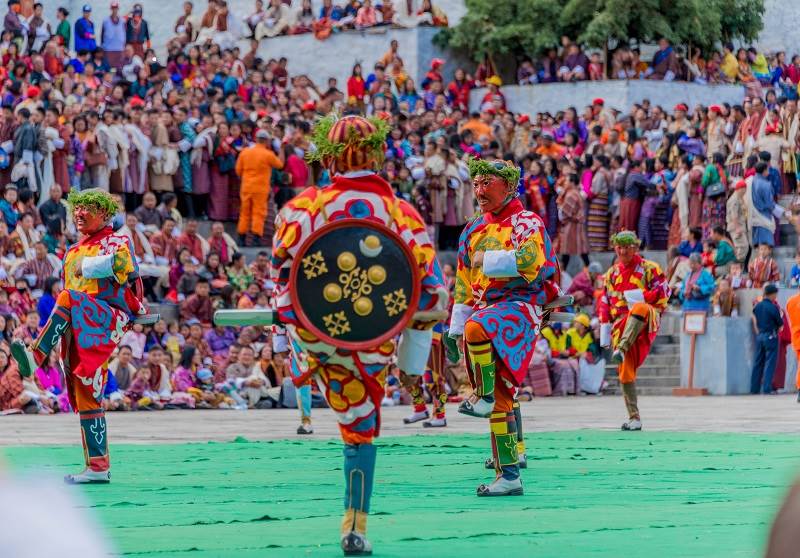
Visiting the Centenary Farmers’ Market in Thimphu is a sensory delight and a peek into the everyday rhythm of Bhutanese life. Held every weekend, the market buzzes with energy—you’ll see locals mingling, laughter drifting through the air, and colourful stalls overflowing with fresh produce. Pick up crisp red apples, leafy greens, fragrant herbs, and seasonal vegetables, all grown by nearby farmers. There’s also an inviting food corner where you can sample hot momos, sweet orange slices, and freshly pressed fruit juices. Wander through the craft stalls, where artisans display hand-carved wooden utensils, woven baskets, and traditional textiles—perfect for unique souvenirs.
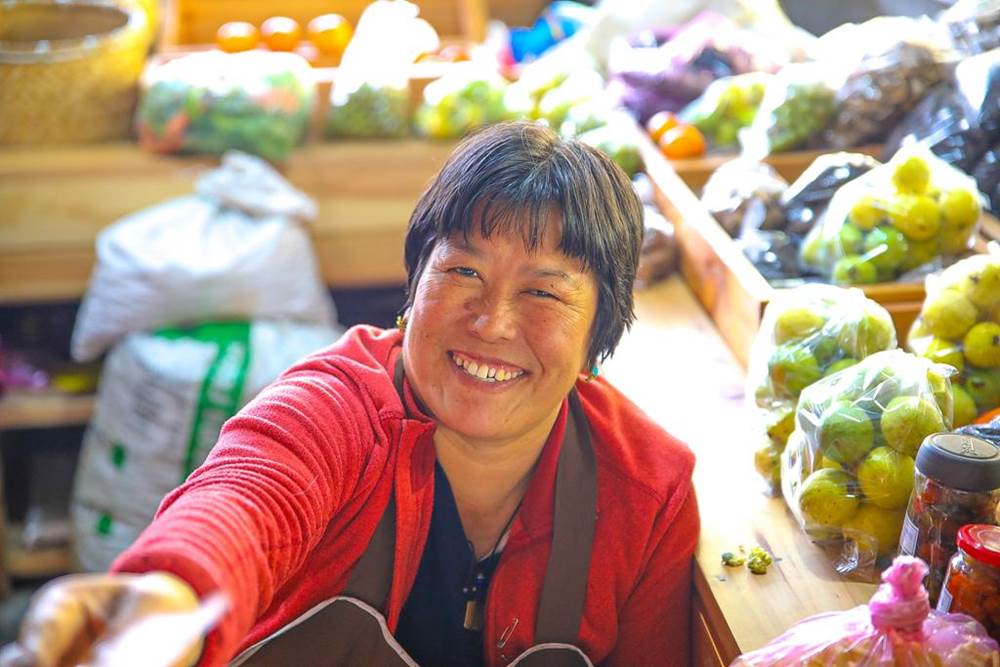
Just a short 15-minute drive from the heart of Thimphu brings you to a scenic hilltop where the Bhutan Broadcasting Tower stands. From this peaceful vantage point, you’ll be treated to sweeping panoramic views of Thimphu Valley—especially stunning in the soft light of early morning or golden hour. If you're lucky, you might even spot the takin, Bhutan’s beloved and rather curious-looking national animal, along the way. For those who enjoy a bit of adventure, an early morning walk up to the viewpoint can also be arranged—perfect for catching the city awakening beneath the mountains.
-908.jpg)
Visiting the Motithang Takin Preserve in Thimphu is a delightful and serene experience—it’s the national animal’s very own sanctuary, nestled just 15–20 minutes from the city centre. What began as a humble mini-zoo became something far more fitting: a forested 3.4-hectare reserve where takin, Bhutan’s unique goat–cow creatures, have chosen to stay even when released into the wild. It’s a charming, low-key wildlife encounter that captures Bhutan’s gentle spirit—perfect for families, nature lovers, and anyone curious about the country’s living symbols.
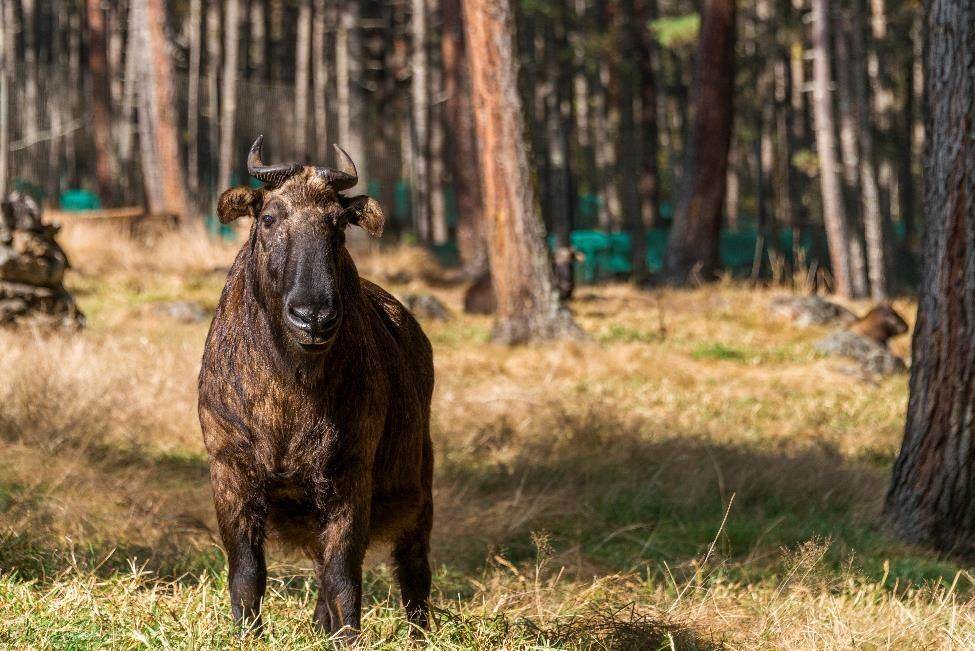
Perched at an altitude of 3,100 metres, Dochula Pass is one of Bhutan’s most serene and awe-inspiring mountain passes. Often cloaked in mist and prayer flags fluttering in the breeze, it’s a place where time seems to slow down. The pass is adorned with 108 memorial chortens, built in honour of Bhutanese soldiers, and offers panoramic views of the snow-capped Himalayan range on clear days. Whether you're pausing for reflection or simply soaking in the stillness, Dochula invites you to breathe deeply, feel the peace, and reconnect with the beauty of the journey.

Stretching 160 metres across the Pho Chhu River, this is the longest suspension bridge in Bhutan. From its swaying span, you’ll be treated to breathtaking views of the majestic Punakha Dzong and the lush Pho Chhu Valley—an unforgettable vantage point for photos and quiet reflection.
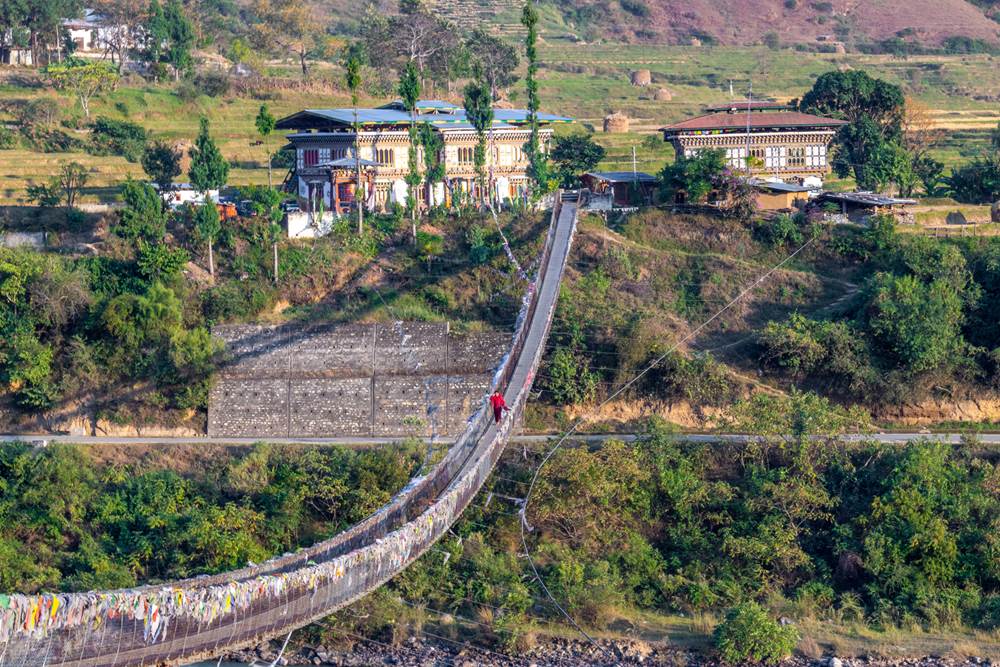
Step into the heart of Bhutanese history and spirituality with a visit to Punakha Dzong, one of the most iconic and breathtaking fortresses in the country. Nestled at the sacred confluence of the Pho Chu and Mo Chu rivers, this architectural masterpiece was built in 1637 by Zhabdrung Ngawang Namgyal, the great unifier of Bhutan. As you cross the traditional wooden cantilever bridge and approach the grand whitewashed walls, you’ll be walking the very grounds where Bhutan’s dual system of governance was first introduced—and where the first King, Gongsar Ugyen Wangchuck, was crowned in 1907. Despite enduring fires and an earthquake, the dzong stands today fully restored—thanks to the vision of the 4th King, Jigme Singye Wangchuck. It now serves as the winter residence of the Je Khenpo, the spiritual head of Bhutan, and houses a monastic community of over 1,000 monks. Marvel at the intricate woodwork and artistry that adorn the halls and courtyards, and let the sacred energy of this historic site leave a lasting impression on your journey.
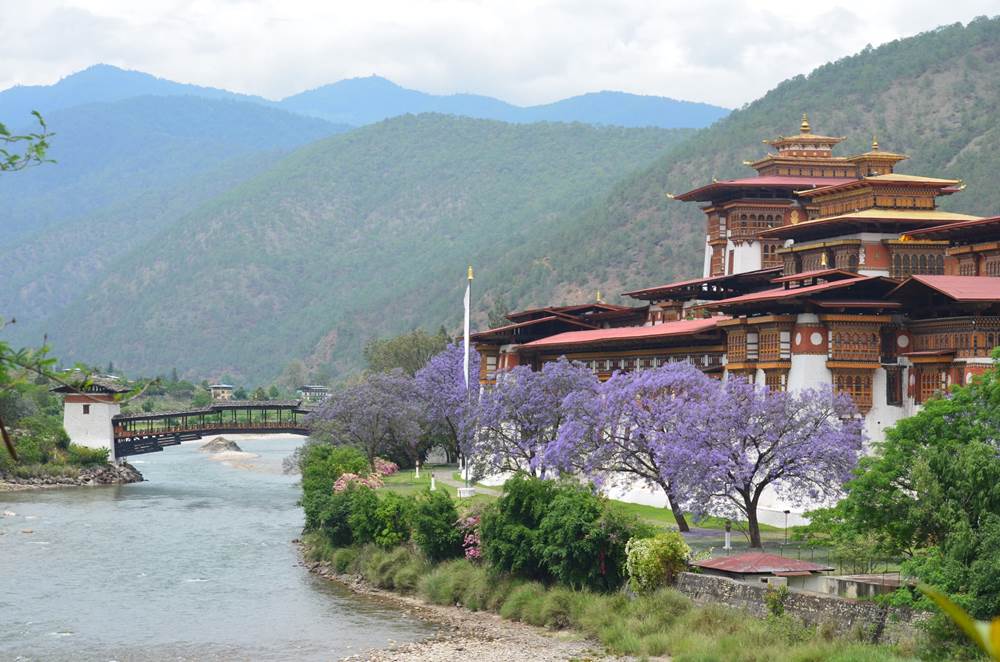
Nestled in the charming village of Sopsokha, Chimi Lhakhang—also known as the Fertility Temple—stands atop a gentle hill near Lobesa. Built in 1499 by Ngawang Choegyel, the 14th Drukpa Hierarch, the monastery is dedicated to the revered and unconventional saint, Lama Drukpa Kunley, famously known as the Divine Madman for his unorthodox teachings and eccentric behavior. To reach the temple, enjoy a scenic 30-minute walk through terraced paddy fields and a quaint village path. Pilgrims from all over the world visit Chimi Lhakhang to seek blessings for fertility, and many couples have returned to share stories of their answered prayers. A visit here offers not only cultural insight but also a peaceful connection with Bhutan’s spiritual traditions.

Check in to your hotel in Punakha and unwind for the night.
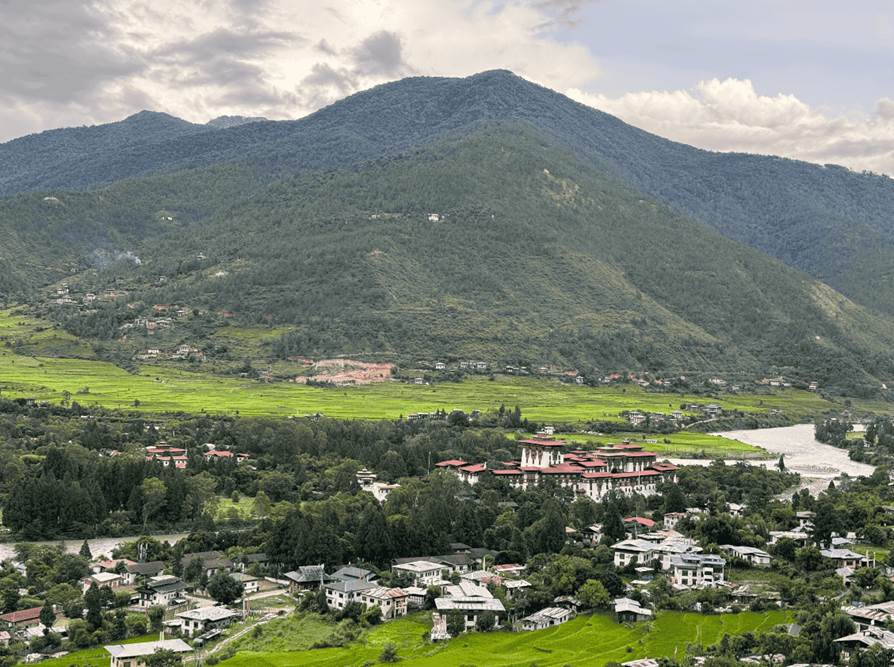
[Duration: 2 hours – 1 hour ascent, 1 hour descent] Embark on a scenic hike through lush paddy fields and pine forests to reach the stunning Khamsum Yulley Namgyal Chorten, perched gracefully on a hilltop overlooking the Punakha Valley. Unlike any other temple in Bhutan, this intricately designed chorten was built by the Queen Mother of the 5th King to promote peace, harmony, and universal well-being. Inside, the temple is adorned with some of Bhutan’s finest spiritual artwork. The walls are covered in detailed frescoes depicting Buddhist masters, protective deities, and profound symbolic imagery—offering a rich visual journey into Vajrayana Buddhist philosophy. This sacred site is not only a visual masterpiece but also a place of deep spiritual resonance, perfect for quiet reflection and cultural insight.
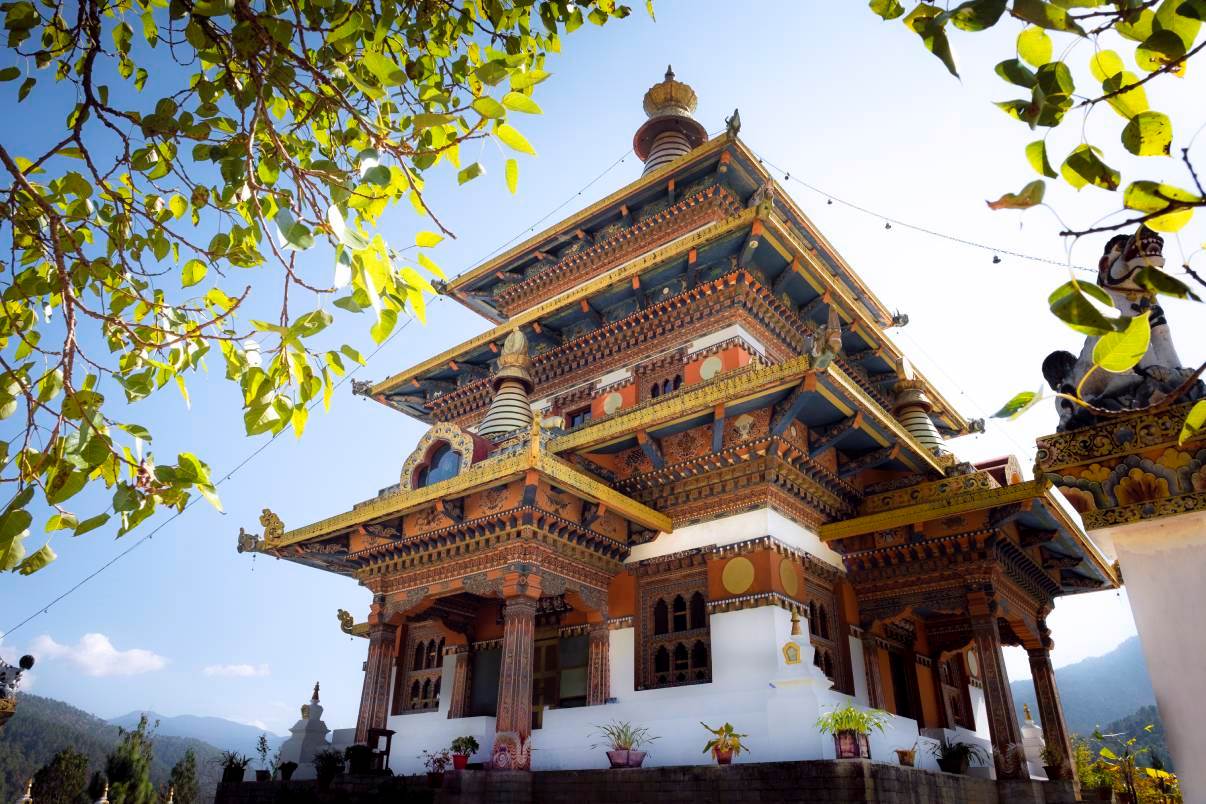
Sangchhen Dorji Lhuendrup Lhakhang temple and nunnery, gracefully perched on a ridge, offers sweeping views of the Toebesa, Punakha, and Wangduephodrang valleys. Dedicated to the Bodhisattva of Compassion, it holds deep spiritual significance. The temple was consecrated by His Holiness in a sacred ceremony attended by His Majesty the King, the Fourth Druk Gyalpo, members of the royal family, and hundreds of devoted pilgrims from Punakha, marking it as a revered site of prayer and devotion.
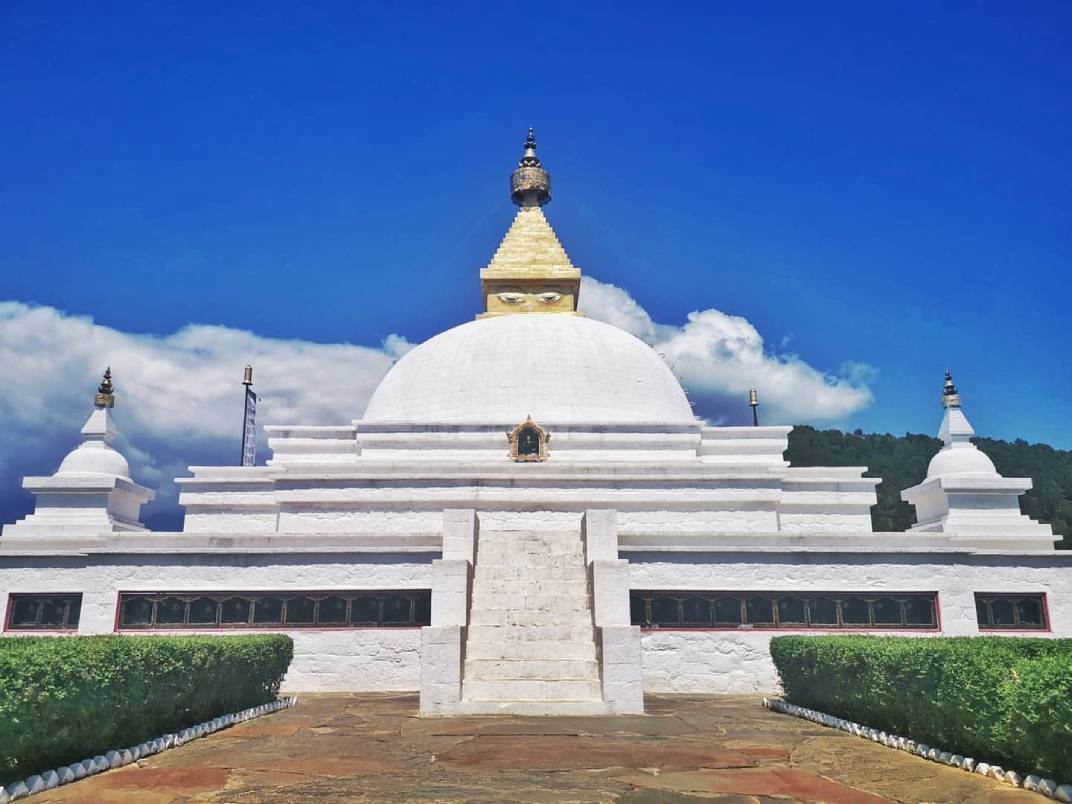
Visit a local Bhutanese family in their home and gain a heartfelt glimpse into daily life in the Kingdom. Enjoy a traditional meal prepared with local ingredients, and dine the Bhutanese way—seated on the floor, surrounded by warm hospitality, laughter, and stories. It’s a unique cultural experience that offers a genuine connection with the people of Bhutan.
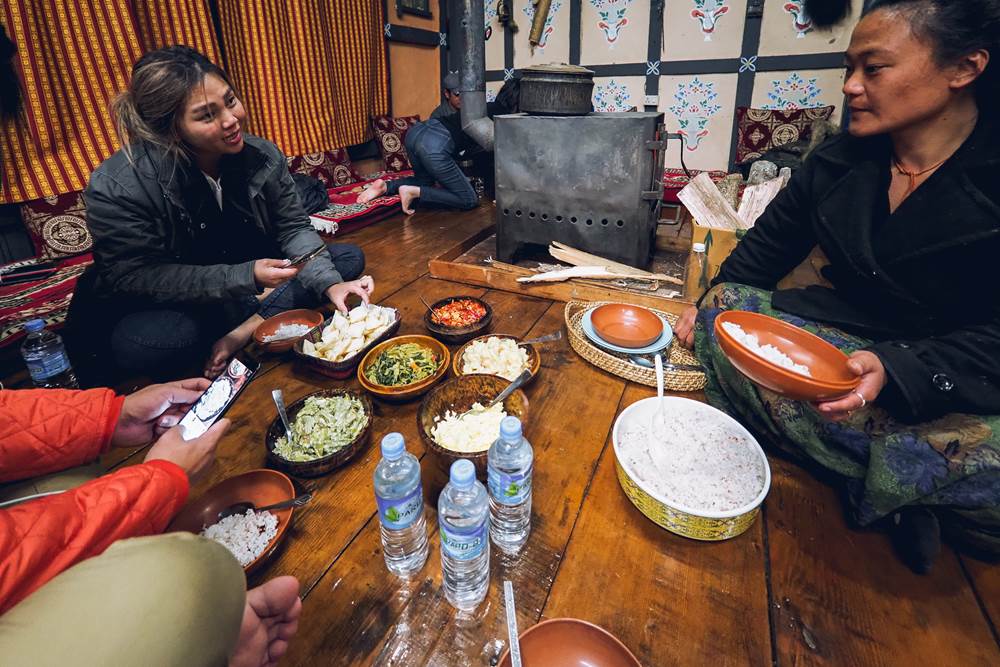
Paro Dzong—also known as Rinpung Dzong, or the “Fortress of a Heap of Jewels”—is a spectacular hilltop monastery-fortress overlooking the Paro River and valley. Built in 1646 on an earlier temple site, it remains one of the finest examples of Bhutanese architecture, with soaring wooden beams, an iconic cantilever bridge and numerous shrines and chapels inside. It has served both as a defensive stronghold against Tibetan invasions and as the administrative and monastic centre for Paro district. Today it’s still home to around 200 monks, hosts the colourful Paro Tsechu festival, and offers visitors a serene yet awe-inspiring glimpse into Bhutan’s spiritual and cultural heritage.
-961.jpg)
Paro Town is a charming and picturesque valley town nestled along the Paro River, surrounded by forested hills and traditional Bhutanese architecture. As the gateway to Bhutan—home to the country’s only international airport—Paro offers a relaxed blend of culture, history, and local life. The town is dotted with whitewashed shops, cosy cafés, handicraft boutiques, and traditional wooden buildings, all set against a stunning Himalayan backdrop. It's a good place to shop for souvenirs and mementos.

At 1300 years old, Kyichu Lhakhang is one of Bhutan’s oldest and most sacred temples, believed to have been built in the 7th century by Tibetan Emperor Songtsen Gampo as part of a spiritual mission to subdue a demoness and spread Buddhism. Located just north of Paro, it is often referred to as the “Sacred Jewel of Bhutan.” Over the centuries, the temple has been expanded and visited by many great masters, including Padmasambhava. It's a peaceful and deeply spiritual place, cherished by pilgrims and visitors alike.
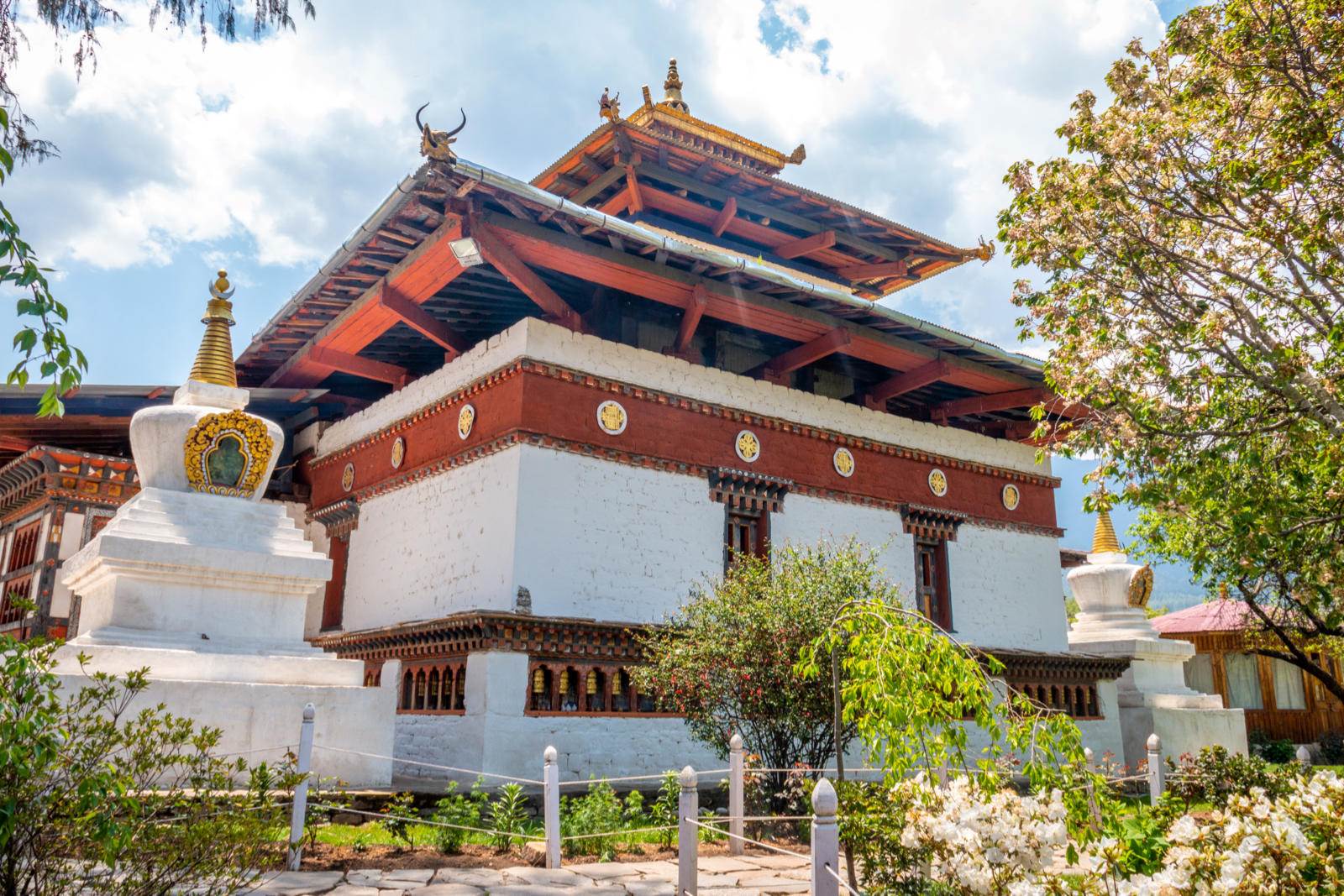
They say, "a visit to Bhutan is not complete without climbing up to the Tiger's Nest". Taktsang Monastery, famously known as the Tiger’s Nest, is Bhutan’s most iconic landmark, dramatically perched on a cliffside 3,120 metres above sea level in Paro Valley. According to legend, Guru Padmasambhava flew to this site in the 8th century on the back of a tigress and meditated in a cave that now lies at the heart of the monastery. Built in 1692, the complex includes temples, meditation caves, and stunning viewpoints that seem to defy gravity. Reaching the monastery involves a scenic 2–3 hour hike through pine forests and fluttering prayer flags—a spiritual and physical journey that rewards you with breathtaking views and deep serenity.
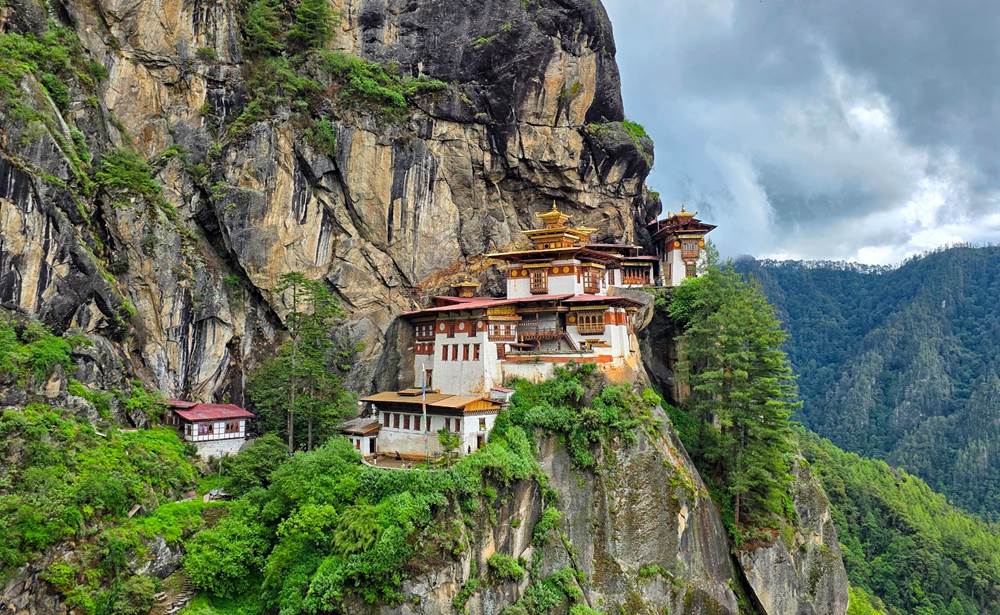
Sink into the comforting warmth of a traditional Bhutanese hot stone bath—an age-old ritual where nature, healing, and heritage come together in perfect harmony. As fire-roasted river stones are carefully dropped into a wooden tub filled with mineral-rich water, they crackle and hiss, releasing therapeutic heat and minerals believed to soothe tired muscles and boost circulation. Infused with fresh mountain herbs known for their calming aromas and medicinal properties, the bath envelops you in a cocoon of peace and restoration. In the quiet embrace of a rustic bathhouse, you’ll feel stress melt away, leaving only stillness and serenity behind. Additional charges apply.
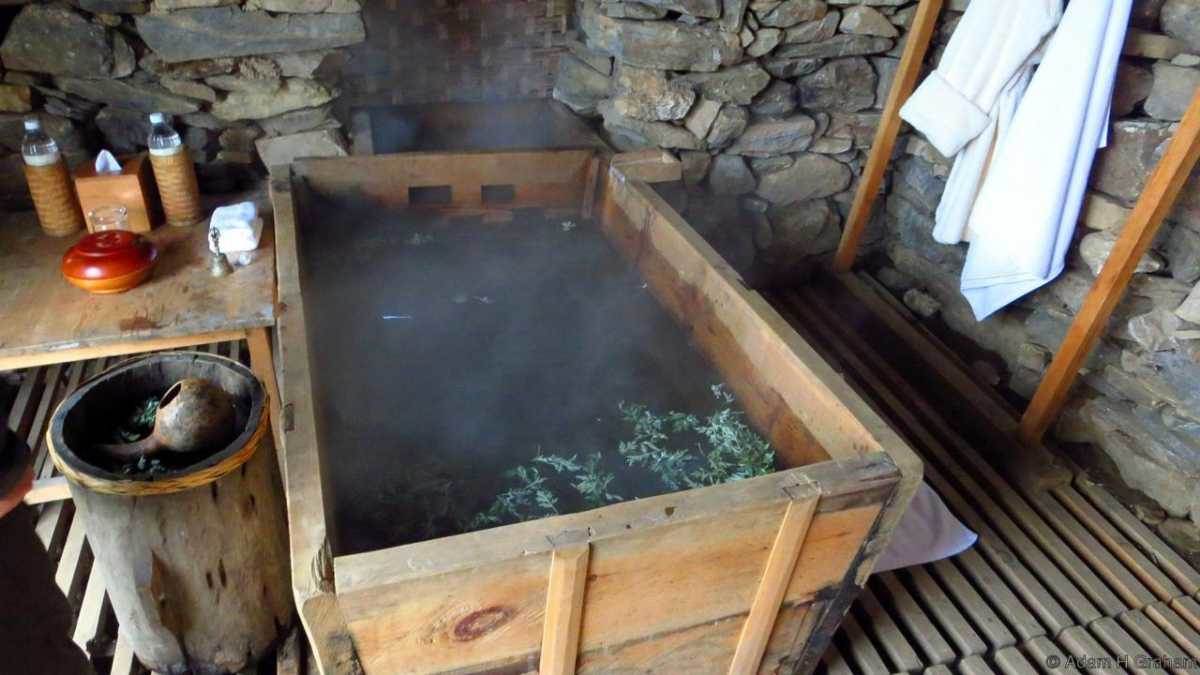
Travel Tips
Druk Asia
Bhutan Office
Singapore Sales Office
Kuala Lumpur Office
Copyright © 2024 Druk Asia - All Right Reserved
Travel Tips
Druk Asia
Bhutan Office
Singapore Sales Office
Kuala Lumpur Office
Copyright © 2024 Druk Asia - All Right Reserved
